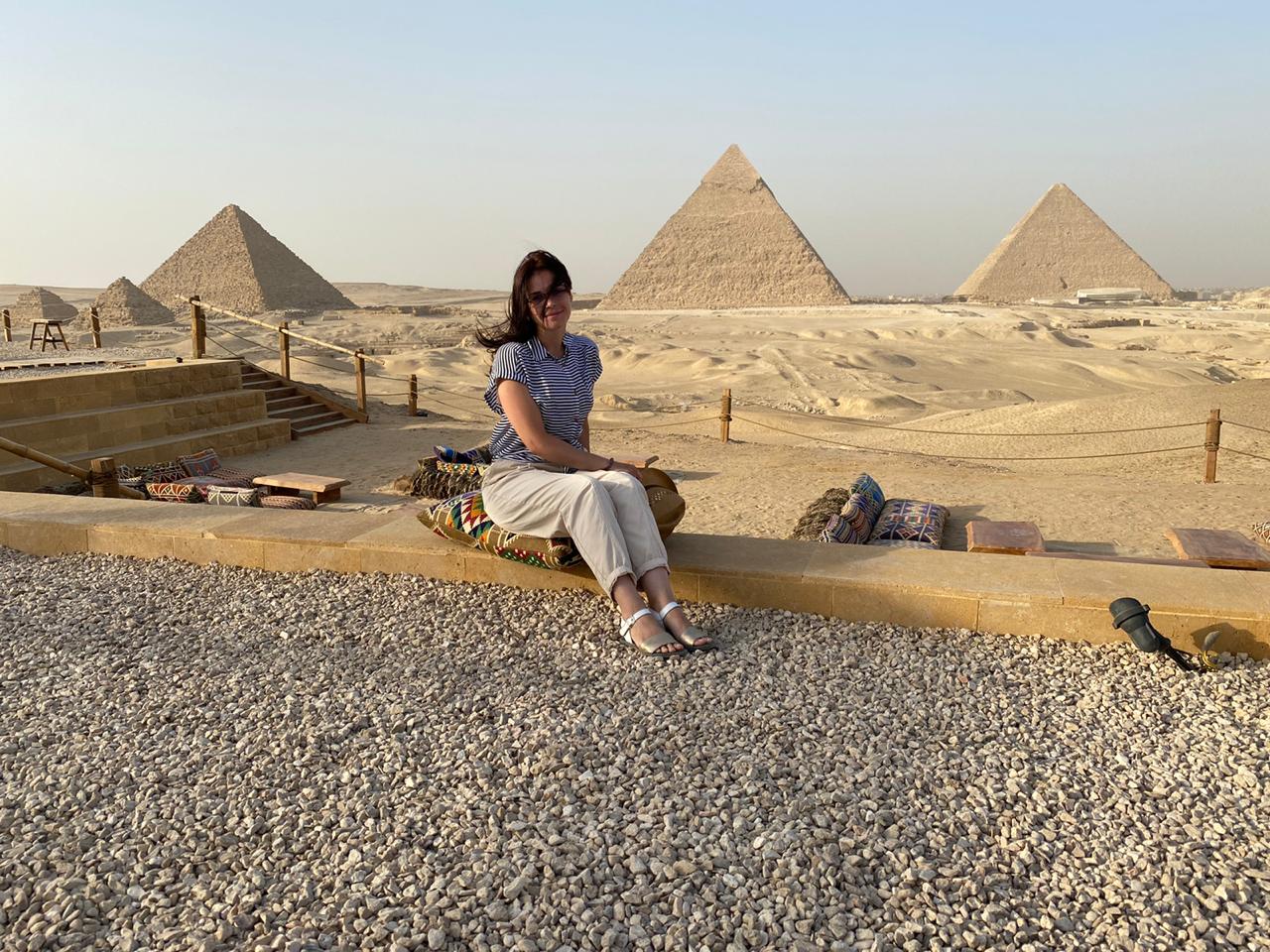The small, spare exhibition space of the Photographic Gallery, located on the American University in Cairo’s New Campus, currently hosts images by almost thirty photographers, spanning a wide range of subjects and styles. Moving from a peaceful, frostbitten image of a melancholy Indiana winter by Darryl Jones, to another by John Tordai of a Palestinian woman wailing in mourning, makes for a somewhat disjointed viewing experience. But while the variety of the exhibition’s content can create disorienting transitions, the collection is rich and full of fascinating images.
The exhibition consists of highlights of the university’s photographic archive, including the work of a few star photographers. Its title, “Echoes,” appropriately reflects its flashes of moments of history and modes of photography now gone.
In assembling the exhibition, the emphasis was not on thematic cohesiveness. Noura Bahgat, curator for the Photographic Gallery and organizer of this exhibition, told Al-Masry Al-Youm, “It is a mixture, trying to pick the best of what we have, and including a variety of things: the master photographers, war photojournalists, and more relaxed pictures.”
The Photographic Gallery holds such retrospectives semi-regularly, “Every now and then we have a group exhibit and we try not to repeat the images included, unless they are very important,” said Bahgat.
The history of photography in this region is one long dominated by a foreign gaze. “Echoes” includes a healthy mix of depictions of the Middle East by western and Middle Eastern photographers.
On the far end of the spectrum, the work of Lehnert and Landrock, a traveling duo from the early 20th century who documented the mysteries of the Orient in North Africa, provides an example of the extremes of the western Orientalizing gaze. Lehnert and Landrock’s photographs emphasize the ethnic dress and exotic beauty of women from Tunisia and Algeria.
In contrast, Faruk Aksoy’s images of worshippers at the Masjid al-Haram in Mecca, adjacent to the work by Lehnert and Landrock, take a contemporary, graphic approach to depicting religious devotion. In a time-lapsed image of the Station of Abraham (stone block used by Abraham as a step while building the kaaba) at Mecca, visitors swarm in white, creating an undulating sea with the texture of cotton. In “Afternoon Prayer at the Haram,” also by Aksoy, worshippers kneel in a spiraling flower formation. The beauty of devotion is portrayed in new and beautiful forms created by worshippers acting as a collective.
The majority but not all of the images take the Middle East, and Egypt in particular, for their subject matter. But there are also images of Ireland, Indiana and Northern Virginia, along with four macroscopic photographs of plants by Walter Chappell.
But a significant portion of the work is photojournalism, creating a stirring depiction of the various loci of chaos in the recent history of Egypt and the Middle East.
In the photojournalistic selections, the Photographic Gallery’s swift responsiveness to current events is striking. The selection includes two images from a 2003 exhibition on the American invasion of Iraq which had begun only months earlier, an image of Tahrir Square from an exhibition held in late Spring of this year, and an image of from the 9/11 attacks displayed on the four-year anniversary of the event.
The photojournalism is a highlight of the exhibition, but the marquis pieces come from two-master photographers whose work is in the university’s permanent collection.
Two photographs by Alfred Stiegletz, a founding father of the art of photography, should be enough to attract a few visitors to the gallery. One image, a stunning and iconic shot of painter Georgia O’Keefe’s hands, highlights Stieglitz’s sensitive, meticulous style and attention to texture. A second image, “The Terminal,” of steam rising off horses’ backs near a trolley car, is less impressive but nonetheless a piece of photographic history.
Ara Guler, another master represented in the collection, made a career depicting Istanbul for Western and Turkish newspapers and magazines. His two contributions, “Beyoglu,” and “Sirkeci, Istanbul,” show life in the bustling capital before it was a center of international business, culture, and tourism.
“Echoes” is a somewhat scatterbrained exhibition. It is strange to see such wide-ranging works in such a small space. At the same time, in its breadth it serves as a kind of concentrated museum of the history of photography. It is a fascinating collection, from the frost of Indiana to the billowing smoke of the invasion of Iraq to the minute architecture of a flower to Lehnert and Landrock’s eerie images of Tunisian women.
“Echoes” is on display at the Photographic Gallery, at the New Campus of the American University in Cairo, Abdul Latif Jameel Hall, Plaza Level, until 20 October. The gallery is open Sunday through Thursday from 10 am to 5:30 pm.




